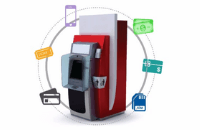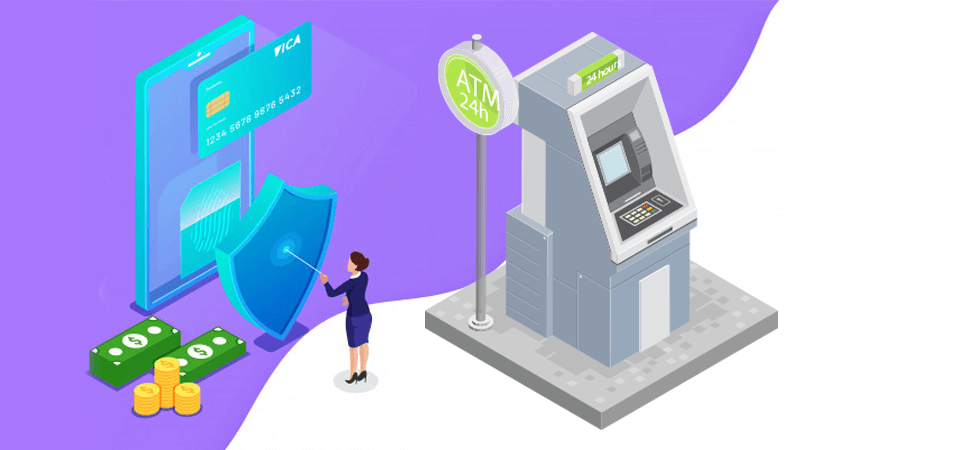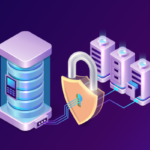According to ATM Marketplace, $2 billion worth of theft occurs globally every year due to skimming incidents and while these incidents make up a third of fraud incidents, they amount to 98% of total fraud losses in the world. The globalized economy also makes these losses incredibly significant because international banking allows transactions from accounts that may be miles away. This makes it easy for criminals to skim information and escape to other countries. However, there are certain simple precautions people can take to avoid such troubles. There are also payment solutions in place to avoid identity theft and financial fraud.
Precautions you can take
ATM skimmers use various devices to steal card information that they place in and around ATMs. They can use card readers which are small covering devices placed over the insert slots. They scan the magnetic stripes on the cards and store the information. Scammers also place hidden cameras near the keypads to record customers inputting their PIN code. Vigilant ATM users can easily find these devices. Card readers are loosely placed and can be pulled off easily while hidden cameras can be placed near suggestion boxes or on the wall near the ATM keypad.
Skimmers also use keyloggers which can store your PINs. They place them over the ATM keypads where keys other than numpads don’t press down. This can lead the user to panic as it stops the transaction mid-process and he/she’s unable to recover the card (unbeknownst to the user, the card returns after a period of inactivity). Scammers often take advantage of this and rush in to the ATM. They tell the user to report to the bank and steal their information in their absence. Customers should be wary of this and refrain from panic. They should report any of these occurrences to the respective bank and the FIA to help them catch perpetrators.
Banks & Payment Services
Since the misuse of technology occurs only when humans are unaware, it is the responsibility of the bank to educate its customers. This will prevent theft through existing methods and alleviate the spread of rumors that instill mistrust of technology amongst the public. For instance, banks can inform customers that they can put transactional limits on their accounts to mitigate quantitative risks as well as disable international transactions unless told otherwise. Services such as VISA and MasterCard enables acceptance ofcredit and debit cards internationally. Hence these precautions can prevent the misuse of stolen information in foreign countries.
Accordingly, these payment services provide safety regulations and emergency procedures to the banks that register with them. Compliance with these protocols can often prevent theft and trace electronic transactions. For instance, if the card is activated in a foreign country, customers can be informed immediately so they may take action if the transaction is unauthorized.
These payment services are also switching from magnetic stripe cards completely to EMV (Europay MasterCard VISA) technology to bypass the dangers of ATM skimming. In addition, biometric-enabled ATMs have also arrived on the scene since 2015. Banks are slowly beginning to adopt their operational guidelines and building applications that comply with them. These will ensure hitherto top-tier security and further decrease instances of theft.
Also Read: Enhancing ATM Security from a Technology Outlook
PCI DSS & PA-DSS
Payment Card Industry Data Security Standards (PCI DSS) Council is an international body which regulates security standards for banks around the world. It ensures any software run by banks around the world is compliant with its security standards. The six main standards are:
- Build and maintain a secure network and systems
- Protect the data of the cardholder
- Maintain a program to manage vulnerabilities
- Implement strong access control measures
- Ensure regular testing and monitoring of networks
- Maintain an information security policy
The Council’s Payment Application Data Security Standards (PA-DSS) regulate payment solution providers. So any software they put out meets the strict criteria set by the body. These include prohibitions on storing credit and debit card data such as security codes, magnetic stripe data and PINs. All these checks and balances help to prevent ATM threats.
The ATM Vendor
How many times have you seen an ATM out of order? Broken keypads, broken slots, exposed wires and detached LAN cables are common if ATMs remain unattended. The latter leaves the ATM open to Malware. Scammers can attach devices to exposed LAN wires and feed in software that allows them to withdraw all of the cash within the ATM.
ATM vendors need to keep their machines in prime condition so that fraud is rare. A weekly or monthly check of the ATM should also be done to make sure it hasn’t been compromised. Vendors also need to replace faulty wiring, make sure security cameras are installed at every ATM and regularly check footage.
Payment Solutions Providers
Payment solutions providers play a huge role in catching and preventing ATM fraud. Previously there had only existed near-real time monitoring methods which caught unauthorized transactions after they had gone through and prevented further ones by blocking the card. Real-time monitoring methods now exist which allow programs to make decisions to block certain transactions.
One such program, called Safer Payments, is being offered by TPS, a payment solutions provider, in collaboration with IBM, to improve financial security across the globe. These programs take multiple factors into account such as registered debit/credit cards, transaction history, current loans, bank account funds, etc.
Such payment solutions are all encompassing, meaning they not only secure payments with the banks and ATMs that they’re registered with, but with various merchants and alternative payment providers around the world.
The Future
ATM technology is being refined and advanced every year. Biometric verification adoption is becoming the norm due to the proliferation of technology. Greater integration with government databases will allow more people to open bank accounts through their local ATMs instead of standing line for hours or filling out tedious forms. Here fingerprint IDs will feed a reservoir of information into the ATM and automate the process. TPS also offers a biometric-based identity management solution to help reduce the risk of fraudulent access.
EMV technology will slowly but surely take over credit/debit card data storage and will make skimming incidents much fewer in comparison to those involving magnetic stripes. Payment solutions providers like TPS are rolling out this technology to its partners swiftly to help prevent skimming incidents.
ATM skimming is a real problem today. However, there are solutions available to help combat it and stop it in its tracks.










Leave A Comment